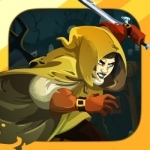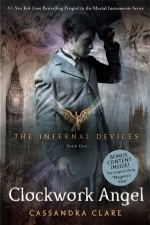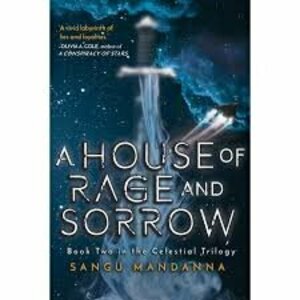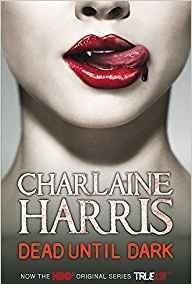Search
Gareth von Kallenbach (980 KP) rated Borderlands 2 - Tiny Tina's Assault on Dragon Keep in Video Games
Jun 19, 2019
Fans of the award-winning Borderlands 2 will be thrilled with the latest downloadable content adventure (DLC) Tiny Tina’s assault on Dragon Keep. This is the fourth downloadable adventure for the game and while it is not necessary to own or have played the previous adventures it is required that you own the full version of Borderlands 2 in order to enjoy the game.
As any fans of the series will know, Tina is the highly precocious yet unstable character with a penchant for blowing things up. This time around she is hosting a role-playing game session for her colleagues from the first game. With time on their hands, the group reluctantly agrees to take part in the adventure which is set within a fantasy realm. This allows the game developers to capture the elements of Borderlands 2 that works so well such as the team-based gameplay, millions of weapons and power up combinations, customizations, and above all action-packed gameplay while introducing a new twist.
The twist this time around is not only in the fantasy setting which allows gamers to encounter skeletons, dragons, Orcs, dwarves, wizards, and other fantasy opponents, but dealing with Tina herself. As the host of the game, Tina often presents seemingly impossible challenges such as introducing an undefeatable Dragon at the start of the game. This allows humor to enter into the picture as you can clearly hear the other players complaining about this development which in turn causes her to adjust the game on the fly to a more manageable opponent or situation. While being immersed in the game and being able to hear the players banter about their situation as well as complain to Tina really captures the immersive elements of role-playing games and provides some of the best moments of the series to date.
The quest is a straightforward save the Queen style mission but along the way there’ll be plenty of laughs and challenges to keep even the most hard-core gamer satisfied. I took great delight in using my high-powered sniper rifle to take down adult skeletal archers as well as reducing skeletal swordsmen to crumbling piles of bone with one well-placed punch. For me the ultimate delight was knocking a helmet off opponent with a well-placed shot and then sending the skull flying with the follow-up. Unfortunately you still have the skeletal body to contend with but once weakened, they went down very easily. There are no vehicles to contend with this time as all travel is done on foot but this in no way lessens the experience as this is a classic combination of role-playing games and Borderlands universe that comes complete with jokes about rolling for initiative and other genre staples.
There is a lot of challenge offered in the game and at times some of the boss battles are exceptionally difficult and work best when you have players assisting you in the quest. Even so, expect several trips to the regeneration chamber as death is definitely a constant in the game even for the most experienced players. The game supports up to four players and allows them to drop in and out of the game at any time.
The graphics and sound of the game are first rate and illustrate just why Borderlands 2 won so many awards. The detail level of dungeons, castles, dark forests, and other fantasy realms came alive with vivid clarity and was a nice change of pace from the previous settings in and around the world of Pandora. I found myself enjoying this offering more than I had the previous three DLC packs which is saying something as each one of them was highly enjoyable in their own way. The banter between Tina and the players will have fans and stitches but there are some very unexpected and tender moments in the game as well.
There are also plenty of side quests available for those who want to expand their experience and countless new weapons and power up opportunities can be found from the abundant treasure chests that litter the landscape as well as by defeating key opponents. I did find the pathfinding at times to be a bit frustrating especially in the mines as at times various members of the party was unsure of which way to go. That being said, the final result was a big success and I look forward to seeing what is to come next in the franchise. The game is available for the PC, Xbox 360, and Playstation 3 systems.
http://sknr.net/2013/07/11/httpsknr-netreviewsgaming-reviewsborderlands-2-tiny-tinas-assault-on-dragon-keep-on-dragon-keep/
As any fans of the series will know, Tina is the highly precocious yet unstable character with a penchant for blowing things up. This time around she is hosting a role-playing game session for her colleagues from the first game. With time on their hands, the group reluctantly agrees to take part in the adventure which is set within a fantasy realm. This allows the game developers to capture the elements of Borderlands 2 that works so well such as the team-based gameplay, millions of weapons and power up combinations, customizations, and above all action-packed gameplay while introducing a new twist.
The twist this time around is not only in the fantasy setting which allows gamers to encounter skeletons, dragons, Orcs, dwarves, wizards, and other fantasy opponents, but dealing with Tina herself. As the host of the game, Tina often presents seemingly impossible challenges such as introducing an undefeatable Dragon at the start of the game. This allows humor to enter into the picture as you can clearly hear the other players complaining about this development which in turn causes her to adjust the game on the fly to a more manageable opponent or situation. While being immersed in the game and being able to hear the players banter about their situation as well as complain to Tina really captures the immersive elements of role-playing games and provides some of the best moments of the series to date.
The quest is a straightforward save the Queen style mission but along the way there’ll be plenty of laughs and challenges to keep even the most hard-core gamer satisfied. I took great delight in using my high-powered sniper rifle to take down adult skeletal archers as well as reducing skeletal swordsmen to crumbling piles of bone with one well-placed punch. For me the ultimate delight was knocking a helmet off opponent with a well-placed shot and then sending the skull flying with the follow-up. Unfortunately you still have the skeletal body to contend with but once weakened, they went down very easily. There are no vehicles to contend with this time as all travel is done on foot but this in no way lessens the experience as this is a classic combination of role-playing games and Borderlands universe that comes complete with jokes about rolling for initiative and other genre staples.
There is a lot of challenge offered in the game and at times some of the boss battles are exceptionally difficult and work best when you have players assisting you in the quest. Even so, expect several trips to the regeneration chamber as death is definitely a constant in the game even for the most experienced players. The game supports up to four players and allows them to drop in and out of the game at any time.
The graphics and sound of the game are first rate and illustrate just why Borderlands 2 won so many awards. The detail level of dungeons, castles, dark forests, and other fantasy realms came alive with vivid clarity and was a nice change of pace from the previous settings in and around the world of Pandora. I found myself enjoying this offering more than I had the previous three DLC packs which is saying something as each one of them was highly enjoyable in their own way. The banter between Tina and the players will have fans and stitches but there are some very unexpected and tender moments in the game as well.
There are also plenty of side quests available for those who want to expand their experience and countless new weapons and power up opportunities can be found from the abundant treasure chests that litter the landscape as well as by defeating key opponents. I did find the pathfinding at times to be a bit frustrating especially in the mines as at times various members of the party was unsure of which way to go. That being said, the final result was a big success and I look forward to seeing what is to come next in the franchise. The game is available for the PC, Xbox 360, and Playstation 3 systems.
http://sknr.net/2013/07/11/httpsknr-netreviewsgaming-reviewsborderlands-2-tiny-tinas-assault-on-dragon-keep-on-dragon-keep/

Planescape: Torment
Games
App
Reviewers say: "Planescape: Torment is a wonderful game, and its Enhanced Edition is a splendid,...
Uptown Oracle (24 KP) rated Clockwork Angel in Books
Jun 30, 2017
Clare exceeds expectations with Clockwork Angel
Clockwork Angel is the first in a trilogy of books. This series is a prequel to The Mortal Instruments, also written by Cassandra Clare. Tessa traveled to London to live with her brother, when he appears missing she is captured. Saved by Will, Tessa lives within the institute with the Shadowhunters helping to find Nate, whilst also finding out what the Magister's evil plan is.
I've heard so many times that The Infernal Devices is so much better than the Mortal Instruments. In comparison I can definitely agree the writing and overall plot is improved. The main issue I had was that in some cases, it was too similar to The Mortal Instruments. My instant thought was Will was similar to Jace although I'm unsure if this was intentional or not. The love triangle was also reminiscent of Clare's previous work.
I enjoyed that Clockwork Angel was set in London rather than New York. I was getting fairly bored of being focused on New York so this gave us a chance to see a new institute. The different location and different time means the institute is extremely different to the one in TMI.
The big question of who is the Magister? in the first chapter was important in the book. I found it both predictable and unpredictable. If Pretty Little Liars has told me anything, if a character claims it's one person, it's probably not them. I was however surprised of who it actually was. So well played, Cassandra Clare.
One of the big improvements is that the adults actually take action. In TMI, there were so many times the teenagers acted purely because the adults weren't doing anything. I was so tired of the adults being incompetent that Charlotte and Henry were a welcome surprise. They also really tried to help Tessa find Nate immediately. There weren't multiple meetings with the Clave before they could do anything.
Clockwork Angel seemed to pick up a lot quicker than TMI and kept pace. The fighting scenes were written better. Less filler content was needed as we already know the world. Although there was a love triangle, a lot less content was put towards building on it. It seemed a lot more like a fantasy than a romance.
Please don't comment any spoilers as I haven't finished the other books yet. But I had a weird thought about Tessa's name being Gray. As the dark sisters are called Black and Dark, does the inclusion of the name Gray fit there? Is this an insight into who she will become? Or who she 'could' become if she is a bad guy? I just thought it was odd to use a name so similar.
I've heard so many times that The Infernal Devices is so much better than the Mortal Instruments. In comparison I can definitely agree the writing and overall plot is improved. The main issue I had was that in some cases, it was too similar to The Mortal Instruments. My instant thought was Will was similar to Jace although I'm unsure if this was intentional or not. The love triangle was also reminiscent of Clare's previous work.
I enjoyed that Clockwork Angel was set in London rather than New York. I was getting fairly bored of being focused on New York so this gave us a chance to see a new institute. The different location and different time means the institute is extremely different to the one in TMI.
The big question of who is the Magister? in the first chapter was important in the book. I found it both predictable and unpredictable. If Pretty Little Liars has told me anything, if a character claims it's one person, it's probably not them. I was however surprised of who it actually was. So well played, Cassandra Clare.
One of the big improvements is that the adults actually take action. In TMI, there were so many times the teenagers acted purely because the adults weren't doing anything. I was so tired of the adults being incompetent that Charlotte and Henry were a welcome surprise. They also really tried to help Tessa find Nate immediately. There weren't multiple meetings with the Clave before they could do anything.
Clockwork Angel seemed to pick up a lot quicker than TMI and kept pace. The fighting scenes were written better. Less filler content was needed as we already know the world. Although there was a love triangle, a lot less content was put towards building on it. It seemed a lot more like a fantasy than a romance.
Please don't comment any spoilers as I haven't finished the other books yet. But I had a weird thought about Tessa's name being Gray. As the dark sisters are called Black and Dark, does the inclusion of the name Gray fit there? Is this an insight into who she will become? Or who she 'could' become if she is a bad guy? I just thought it was odd to use a name so similar.
Kyera (8 KP) rated City of Ashes (The Mortal Instruments, #2) in Books
Jan 31, 2018
City of Ashes is the second book in the Mortal Instruments series by Cassandra Clare. It continues the fantastic world building that Cassie started in City of Bones. You delve further into the Shadow World and the politics of the Clave, although it still takes place solely in New York City. Some people have difficulty immersing themselves in the City of Bones because the pacing isn’t fast enough for them, but there are some good action sequences that might make this second book more appealing. I personally have not experienced that lack of engagement, but I appreciate the world building and that may cause me to approach the story from a different perspective.
As much as I loved the first book, you can see a marked improvement in Cassie’s writing even by this second book. There is a particular scene in which the setting is described so vividly that you can easily imagine the location building around you in your mind. Immersive world building is always very important to me in books, especially fantasy series, so I cannot recommend this series enough. Although it is the earliest of her writing, you cannot miss out on all of the details she provides about the world. You go on the journey with Clary as you both learn about Downworlders, the Clave, and demons.
City of Ashes further develops the relationships and connections between the characters. You can feel how much they care for one another and it’s really authentic. Although I’ve read this series before it has been a while since I delved into the series that started it all. I am being reintroduced to favourite characters and realizing just how much they’ve grown over the course of the numerous novels that Cassie has written. As I re-read interactions and laugh at witty lines, I fall in love with the characters all over again. I remember what it is that made me care for them in the first place, not just their strengths but their vulnerabilities.
There’s not much else I can say without discussing plot points or spoiling things from this or the first book, so I would just end it with – please, if you’re hesitant, give this series a chance. I would highly recommend it and in my opinion, it definitely needs to be read prior to reading Cassie’s newest series, the Dark Artifices. As incredible as the world building is in that series, it’s adding to the lore that has been built and evolved over the course of ten novels. It won’t be as impactful if you don’t have the foundational knowledge before you read the Dark Artifices.
As much as I loved the first book, you can see a marked improvement in Cassie’s writing even by this second book. There is a particular scene in which the setting is described so vividly that you can easily imagine the location building around you in your mind. Immersive world building is always very important to me in books, especially fantasy series, so I cannot recommend this series enough. Although it is the earliest of her writing, you cannot miss out on all of the details she provides about the world. You go on the journey with Clary as you both learn about Downworlders, the Clave, and demons.
City of Ashes further develops the relationships and connections between the characters. You can feel how much they care for one another and it’s really authentic. Although I’ve read this series before it has been a while since I delved into the series that started it all. I am being reintroduced to favourite characters and realizing just how much they’ve grown over the course of the numerous novels that Cassie has written. As I re-read interactions and laugh at witty lines, I fall in love with the characters all over again. I remember what it is that made me care for them in the first place, not just their strengths but their vulnerabilities.
There’s not much else I can say without discussing plot points or spoiling things from this or the first book, so I would just end it with – please, if you’re hesitant, give this series a chance. I would highly recommend it and in my opinion, it definitely needs to be read prior to reading Cassie’s newest series, the Dark Artifices. As incredible as the world building is in that series, it’s adding to the lore that has been built and evolved over the course of ten novels. It won’t be as impactful if you don’t have the foundational knowledge before you read the Dark Artifices.
Anne (15130 KP) rated A House of Rage and Sorrow (The Celestial Trilogy, #2) in Books
Nov 4, 2019
I'd say this was probably about a 4 star read for me. I have been looking forward to this book after reading A Spark of White Fire, the previous book, which was an amazing 5 stars for me. This book is more or less a retelling of the Mahabarata in Space and it's different because it's written based from Hindu Mythology, which I don't read a lot of, but have always wanted to read and know more about it.
This book was harder to read for me than the first because it was more emotional than the first, maybe a bit more dark and heavy, but it had to be for where the story's going and with where the story was in the first book. I had a major book hangover from the first book, but the book hangover isn't quite as bad this time. I'm more nervous about reading what comes next because it got pretty intense and emotional during this one.
It picks up right where it left off from the ending of the second book, flows well with the transition, but if you haven't read the first book, you might not get what's going on so I would recommend reading the previous book first before this one.
Without getting too spoilery here, the twins are even more at odds here in this book, Esmae, and Alexi, because of fighting over Kali and who gets to be the ruler and especially because of what happened with the duel and Rama. Oh man, that was a hard part of the story, that's part of why this book is so hard because of what happened with Rama. More family info, dynamics, and things develop and come to light throughout this book and the romance develops more between certain characters like Max and Esmae. There's a lot of information and feelings that are covered in this book and it deals with a lot of grief, sadness, anger with the fighting and everything that's happened, is going on and is going to happen.
I didn't like it as much as the first book because it was so heavy and dark from the emotional standpoint, but it kind of had to be that way in this part of the story. There was also a few instances of profanity/language that bothered me because I prefer to read stories without language and such when possible. Other than that, it was a well written good book that I would recommend to others especially if you loved the first one, which if you haven't read the first one, you should. Also if you want to read a Sci-Fi and Fantasy story in space that is a retelling and involves the Mahabarata and Hindu Mythology then you should read it.
This book was harder to read for me than the first because it was more emotional than the first, maybe a bit more dark and heavy, but it had to be for where the story's going and with where the story was in the first book. I had a major book hangover from the first book, but the book hangover isn't quite as bad this time. I'm more nervous about reading what comes next because it got pretty intense and emotional during this one.
It picks up right where it left off from the ending of the second book, flows well with the transition, but if you haven't read the first book, you might not get what's going on so I would recommend reading the previous book first before this one.
Without getting too spoilery here, the twins are even more at odds here in this book, Esmae, and Alexi, because of fighting over Kali and who gets to be the ruler and especially because of what happened with the duel and Rama. Oh man, that was a hard part of the story, that's part of why this book is so hard because of what happened with Rama. More family info, dynamics, and things develop and come to light throughout this book and the romance develops more between certain characters like Max and Esmae. There's a lot of information and feelings that are covered in this book and it deals with a lot of grief, sadness, anger with the fighting and everything that's happened, is going on and is going to happen.
I didn't like it as much as the first book because it was so heavy and dark from the emotional standpoint, but it kind of had to be that way in this part of the story. There was also a few instances of profanity/language that bothered me because I prefer to read stories without language and such when possible. Other than that, it was a well written good book that I would recommend to others especially if you loved the first one, which if you haven't read the first one, you should. Also if you want to read a Sci-Fi and Fantasy story in space that is a retelling and involves the Mahabarata and Hindu Mythology then you should read it.
Ivana A. | Diary of Difference (1171 KP) rated Dead Until Dark (Sookie Stackhouse, #1) in Books
Aug 3, 2020
<a href="https://amzn.to/2Wi7amb">Wishlist</a>; | <a
<a href="https://diaryofdifference.com/">Blog</a>; | <a href="https://www.facebook.com/diaryofdifference/">Facebook</a>; | <a href="https://twitter.com/DiaryDifference">Twitter</a>; | <a href="https://www.instagram.com/diaryofdifference/">Instagram</a>; | <a href="https://www.pinterest.co.uk/diaryofdifference/pins/">Pinterest</a>;
#1 <a href="https://www.goodreads.com/review/show/3262782990">Dead Until Dark</a> - ★★★★
<img src="https://i0.wp.com/diaryofdifference.com/wp-content/uploads/2020/04/Book-Review-Banner-36.png?w=663&ssl=1"/>;
<b><i>Dead Until Dark by Charlaine Harris is the first book in the Sookie Stackhouse series. We follow the life of Sookie, a waitress in Louisiana, who also has the ability to read people’s minds. </i></b>
When a vampire enters the bar and Sookie can’t read his mind – she is intrigued and wants to know this mysterious man better. But vampires usually mean trouble, and maybe Sookie is not really for all the troubles to start coming her way.
After watching the TV show “True Blood” and finding out that there is a book series, I had to read the books. I am usually a person that reads the books before watching the adaptations. The first book was great and I also loved the TV Show.
<b><i>I liked everyone, apart from Sookie. </i></b>
Possibly because she acts very immature at all times and behaves like a spoilt child, when others tell her no. Maybe it is the lack of fear, empathy and emotion she feels. Or maybe, it is just the fact that she feels entitled because of her special ability, and likes to talk about how people always treat her badly because she is different. I just didn’t like her at all. And given the fact that she is the main character in this series, I am wondering how I like this book. Sookie – if you don’t behave in the next books, we’re going to have some problems!
I loved this book because of the side characters. In Dead Until Dark, we meen many amazing characters that I loved who have their own stories to tell. This was something I really enjoyed, and considering I watched the TV Shows and knew some of these stories, I was actually excited to read the book version of them. It felt like I was meeting them again for the very first time. I was really hoping to meet Tara though, but she is not in the first book… Oh well. Maybe she’ll appear after? Don’t tell me if you know.
Charlaine Harris has an interesting writing style that kept me engaged. I was invested and curious throughout the whole book. I loved the adventures and the plot twists that kept coming up. The ending was meh, but considering the fact that it is a build-up for the second book, I wasn’t too surprised. It definitely gives you something to think about until you read the next book though.
<b><i>Vampire Bill was the character that intrigued me the most.</i></b>
I was so glad that he was not the usual vampire type we are used to, of the likes of Edward Cullen or the Salvatore brothers. Bill seemed more mature, more mysterious and I loved it.
I actually enjoyed the whole vampire world in this book. The rules and the hierarchy model was pleasantly surprising. It is interesting to dive in more in how the vampires respect each other depending on their ranks and age. Even though I do wish that the mythology was more followed through, it was nice to read a book where vampires are living in the society, and are more or less accepted. We could see how people still have their prejudice though, as is the example that the women who tend to hang out with vampires are called “fangbangers”, and they tend to be frowned upon by society.
<b><i>Overall, I believe Dead Until Dark is a great first book, and a promising beginning of the Sookie Stackhouse series. I will definitely be continuing the series!
Highly recommended if you are a fan of vampires, fantasy, romance and a bit of mystery, followed by many different side characters that you will instantly adore.</i></b>
<a href="https://amzn.to/2Wi7amb">Wishlist</a>; | <a
<a href="https://diaryofdifference.com/">Blog</a>; | <a href="https://www.facebook.com/diaryofdifference/">Facebook</a>; | <a href="https://twitter.com/DiaryDifference">Twitter</a>; | <a href="https://www.instagram.com/diaryofdifference/">Instagram</a>; | <a href="https://www.pinterest.co.uk/diaryofdifference/pins/">Pinterest</a>;
<a href="https://diaryofdifference.com/">Blog</a>; | <a href="https://www.facebook.com/diaryofdifference/">Facebook</a>; | <a href="https://twitter.com/DiaryDifference">Twitter</a>; | <a href="https://www.instagram.com/diaryofdifference/">Instagram</a>; | <a href="https://www.pinterest.co.uk/diaryofdifference/pins/">Pinterest</a>;
#1 <a href="https://www.goodreads.com/review/show/3262782990">Dead Until Dark</a> - ★★★★
<img src="https://i0.wp.com/diaryofdifference.com/wp-content/uploads/2020/04/Book-Review-Banner-36.png?w=663&ssl=1"/>;
<b><i>Dead Until Dark by Charlaine Harris is the first book in the Sookie Stackhouse series. We follow the life of Sookie, a waitress in Louisiana, who also has the ability to read people’s minds. </i></b>
When a vampire enters the bar and Sookie can’t read his mind – she is intrigued and wants to know this mysterious man better. But vampires usually mean trouble, and maybe Sookie is not really for all the troubles to start coming her way.
After watching the TV show “True Blood” and finding out that there is a book series, I had to read the books. I am usually a person that reads the books before watching the adaptations. The first book was great and I also loved the TV Show.
<b><i>I liked everyone, apart from Sookie. </i></b>
Possibly because she acts very immature at all times and behaves like a spoilt child, when others tell her no. Maybe it is the lack of fear, empathy and emotion she feels. Or maybe, it is just the fact that she feels entitled because of her special ability, and likes to talk about how people always treat her badly because she is different. I just didn’t like her at all. And given the fact that she is the main character in this series, I am wondering how I like this book. Sookie – if you don’t behave in the next books, we’re going to have some problems!
I loved this book because of the side characters. In Dead Until Dark, we meen many amazing characters that I loved who have their own stories to tell. This was something I really enjoyed, and considering I watched the TV Shows and knew some of these stories, I was actually excited to read the book version of them. It felt like I was meeting them again for the very first time. I was really hoping to meet Tara though, but she is not in the first book… Oh well. Maybe she’ll appear after? Don’t tell me if you know.
Charlaine Harris has an interesting writing style that kept me engaged. I was invested and curious throughout the whole book. I loved the adventures and the plot twists that kept coming up. The ending was meh, but considering the fact that it is a build-up for the second book, I wasn’t too surprised. It definitely gives you something to think about until you read the next book though.
<b><i>Vampire Bill was the character that intrigued me the most.</i></b>
I was so glad that he was not the usual vampire type we are used to, of the likes of Edward Cullen or the Salvatore brothers. Bill seemed more mature, more mysterious and I loved it.
I actually enjoyed the whole vampire world in this book. The rules and the hierarchy model was pleasantly surprising. It is interesting to dive in more in how the vampires respect each other depending on their ranks and age. Even though I do wish that the mythology was more followed through, it was nice to read a book where vampires are living in the society, and are more or less accepted. We could see how people still have their prejudice though, as is the example that the women who tend to hang out with vampires are called “fangbangers”, and they tend to be frowned upon by society.
<b><i>Overall, I believe Dead Until Dark is a great first book, and a promising beginning of the Sookie Stackhouse series. I will definitely be continuing the series!
Highly recommended if you are a fan of vampires, fantasy, romance and a bit of mystery, followed by many different side characters that you will instantly adore.</i></b>
<a href="https://amzn.to/2Wi7amb">Wishlist</a>; | <a
<a href="https://diaryofdifference.com/">Blog</a>; | <a href="https://www.facebook.com/diaryofdifference/">Facebook</a>; | <a href="https://twitter.com/DiaryDifference">Twitter</a>; | <a href="https://www.instagram.com/diaryofdifference/">Instagram</a>; | <a href="https://www.pinterest.co.uk/diaryofdifference/pins/">Pinterest</a>;
Bob Mann (459 KP) rated Colossal (2016) in Movies
Sep 29, 2021
A Marvel-ous Indie Movie
Well!! I’ve been really surprised (in a good way) by two films this year, and both have involved monsters (the first being “A Monster Calls” back in January).
It’s really difficult to categorise “Colossal” – imdb classes it as a “Comedy, Action, Drama”. Comedy? Yes, but it’s a very dark comedy indeed. Action? Hmm, not really… if you go to this expecting ‘Godzilla 2’ or some polished Marvel-style film (not that I was!) you will be sorely disappointed. Drama? This is probably the nearest match, since at its heart this is a clever study on the people and relationships at the heart of a bizarre Sci-Fi event.
Anne Hathaway (“Les Miserables”) stars as Gloria, a borderline alcoholic-waster sponging off the good-natured but controlling Tim (Dan Stevens, “Beauty and the Beast”) in his New York apartment. When Tim’s patience finally runs out, Gloria returns to her hometown to an empty house and the attentions of a former school friend, bar owner Oscar (Jason Sudeikis), who clearly holds an unhealthy fascination with her. Borrowing an idea from “A Monster Calls”, at a specific time in the US morning a huge monster appears from thin air in Seoul, South Korea, killing people and smashing buildings in a seemingly uncoordinated and random way. Bizarrely, this only happens when Gloria is standing at a particular spot in a particular kid’s playground. Could the two events possibly be related?
I always like to categorize films in my head as being “like” others, but this one’s really difficult to pin down. It borrows its main premise from a famous scene in “E.T.” (indeed one also involving alcohol) but the film’s fantasy elements and dark undertones have more similarities in style to “Jumanji”. Then again, there are elements of the Kaufman about it in that it is as weird in some places as “Being John Malkovich”.
The film stays on ‘Whimsical Street’ for the first half of the film, but then takes a sharp left turn into ‘Dark Avenue’ (and for “dark” read “extremely black and sinister”). It then becomes a far more uncomfortable watch for the viewer. The metaphor of the monster for Gloria’s growing addiction is clear, but emerging themes of control, jealousy, violent bullying and small-town social entrapment also emerge.
Here the acting talents of Hathaway and Sudeikis really come to the fore: heavyweight Hollywood talent adding some significant ‘oomph’ to what is a fairly modest indie project. Hathaway is in kooky mode here, gurning to great comic effect, and this adds warmth to a not particularly likeable character. And Sudeikis (more commonly seen in lighter and frothier comedies like “We’re the Millers” and “Horrible Bosses”) is a surprise in the role delivering some real acting grit.
The writer and director is Spaniard Nacho Vigalondo. No, me neither. But he seems to have come from nowhere to deliver this high profile cinema release, and it would not be a surprise for me to see this nominated as an original screenplay come the awards season. His quirky style is refreshing. (Hell, delivering ANY novel new summer movie that is not part of a franchise or TV re-boot is refreshing!)
The film’s not perfect, and its disjointed style can be unsettling. While the lead characters are quite well defined, others are less so. Joel in particular, played by Austin Stowell (“Whiplash“, “Bridge of Spies“), is such an irritating doormat of a character that you just want to thump him yelling “Do Something you wimp” to his face!
I am normally the first to pick scientific holes in a story, but here the story is so “out there” that the details become irrelevant, and – like “Guardians of the Galaxy Vol 2” – the film revels in its absurdity. (There is however a jumbo jet sized hole in the plot if you think about it!) But some of the moments of revelation (particularly one set in a wood) are brilliantly done and you are never quite sure where the film is going to go next. I was concerned that the ending would not live up to the promise of the film, but I was not disappointed.
Like “A Monster Calls” the film will probably suffer at the box office by its marketing confusing the audience. People will assume it’s possibly a “monster movie” or maybe a piece of comedy fluff (particularly with Sudeikis in the cast), but in reality it’s neither of these. It won’t be to everyone’s tastes for sure, but in the bland desert of mainstream movie releases, here is an oasis of something interesting and novel and in my book definitely worthy of your movie dollar. Recommended.
It’s really difficult to categorise “Colossal” – imdb classes it as a “Comedy, Action, Drama”. Comedy? Yes, but it’s a very dark comedy indeed. Action? Hmm, not really… if you go to this expecting ‘Godzilla 2’ or some polished Marvel-style film (not that I was!) you will be sorely disappointed. Drama? This is probably the nearest match, since at its heart this is a clever study on the people and relationships at the heart of a bizarre Sci-Fi event.
Anne Hathaway (“Les Miserables”) stars as Gloria, a borderline alcoholic-waster sponging off the good-natured but controlling Tim (Dan Stevens, “Beauty and the Beast”) in his New York apartment. When Tim’s patience finally runs out, Gloria returns to her hometown to an empty house and the attentions of a former school friend, bar owner Oscar (Jason Sudeikis), who clearly holds an unhealthy fascination with her. Borrowing an idea from “A Monster Calls”, at a specific time in the US morning a huge monster appears from thin air in Seoul, South Korea, killing people and smashing buildings in a seemingly uncoordinated and random way. Bizarrely, this only happens when Gloria is standing at a particular spot in a particular kid’s playground. Could the two events possibly be related?
I always like to categorize films in my head as being “like” others, but this one’s really difficult to pin down. It borrows its main premise from a famous scene in “E.T.” (indeed one also involving alcohol) but the film’s fantasy elements and dark undertones have more similarities in style to “Jumanji”. Then again, there are elements of the Kaufman about it in that it is as weird in some places as “Being John Malkovich”.
The film stays on ‘Whimsical Street’ for the first half of the film, but then takes a sharp left turn into ‘Dark Avenue’ (and for “dark” read “extremely black and sinister”). It then becomes a far more uncomfortable watch for the viewer. The metaphor of the monster for Gloria’s growing addiction is clear, but emerging themes of control, jealousy, violent bullying and small-town social entrapment also emerge.
Here the acting talents of Hathaway and Sudeikis really come to the fore: heavyweight Hollywood talent adding some significant ‘oomph’ to what is a fairly modest indie project. Hathaway is in kooky mode here, gurning to great comic effect, and this adds warmth to a not particularly likeable character. And Sudeikis (more commonly seen in lighter and frothier comedies like “We’re the Millers” and “Horrible Bosses”) is a surprise in the role delivering some real acting grit.
The writer and director is Spaniard Nacho Vigalondo. No, me neither. But he seems to have come from nowhere to deliver this high profile cinema release, and it would not be a surprise for me to see this nominated as an original screenplay come the awards season. His quirky style is refreshing. (Hell, delivering ANY novel new summer movie that is not part of a franchise or TV re-boot is refreshing!)
The film’s not perfect, and its disjointed style can be unsettling. While the lead characters are quite well defined, others are less so. Joel in particular, played by Austin Stowell (“Whiplash“, “Bridge of Spies“), is such an irritating doormat of a character that you just want to thump him yelling “Do Something you wimp” to his face!
I am normally the first to pick scientific holes in a story, but here the story is so “out there” that the details become irrelevant, and – like “Guardians of the Galaxy Vol 2” – the film revels in its absurdity. (There is however a jumbo jet sized hole in the plot if you think about it!) But some of the moments of revelation (particularly one set in a wood) are brilliantly done and you are never quite sure where the film is going to go next. I was concerned that the ending would not live up to the promise of the film, but I was not disappointed.
Like “A Monster Calls” the film will probably suffer at the box office by its marketing confusing the audience. People will assume it’s possibly a “monster movie” or maybe a piece of comedy fluff (particularly with Sudeikis in the cast), but in reality it’s neither of these. It won’t be to everyone’s tastes for sure, but in the bland desert of mainstream movie releases, here is an oasis of something interesting and novel and in my book definitely worthy of your movie dollar. Recommended.

Crowntakers - The Ultimate Strategy RPG
Games
App
Dark times are imminent: the king’s abduction throws a once peaceful land into turmoil. Being the...

Mordheim: Warband Skirmish
Games
App
Explore the ruins of the City of Mordheim, clash with other scavenging warbands and collect...
Heather Cranmer (2721 KP) rated Serenade (The Dark Nocturne #1) in Books
Aug 1, 2022
I don't normally read young adult books anymore, but when I read the synopsis for Serenade by Morgan Shamy, I was intrigued. I decided to get the eBook, and I am happy I did because I ended up loving Serenade!
I felt as if the plot of Serenade by Morgan Shamy was very original. Yes, it does have some of the other elements of paranormal fantasy that others of the same genre have such as the evil supernatural and paranormal creatures, but Shamy uses all of that and changes it all around to form a very different narrative. Her background in music and dance really shines through throughout Serenade. Whilst reading this novel, I was kept on the edge of my seat waiting to see what would happen next to November and her school. I also enjoyed how Morgan Shamy is not afraid of killing off any character whether they are minor or major. It made the book that much more suspenseful. There was one major plot twist that I didn't see coming. Although Serenade is a series, there's no major cliff hanger which was a plus.
I loved each and every character in Serenade. Each was well fleshed out, and I felt as if I was reading about actual people instead of characters in a book. November was an awesome main character! While there were a few times, I felt as if she made the wrong decision, I could easily see why she chose to do/act the way she did. It was interesting to see her hatch her plan to take on the baddies of the book as well as how she would stand up for her cousin. There was something very endearing about April, and I think she was my favorite character. There was something so innocent and sweet about her. I wanted a friend like April. In fact, I think I kind of was like April in high school - low self-esteem and never quite fitting in. I never liked Cam, not because he wasn't written well, but I hated how assured of himself he was. I was always drawn to Vincent even if he was moody and broody a lot of the time. My favorite creatures in Serenade were definitely the sylphs. I loved how they could go from being beautiful and alluring to deadly quite suddenly.
Trigger warnings for Serenade include violence, death, and murder.
Overall, Serenade is an original take on the whole paranormal fantasy genre that's full of relatable characters and a plot that sucks you in from the very first page. Once you start reading this novel, you will struggle to put it down. It will have that affect on you. I would definitely recommend Serenade by Morgan Shamy to those aged 14+ who are after a book with a fresh new plot full of action, adventure, and some really cool monsters. I have already started reading Etude, the next book in The Dark Nocturne series by Morgan Shamy!
I felt as if the plot of Serenade by Morgan Shamy was very original. Yes, it does have some of the other elements of paranormal fantasy that others of the same genre have such as the evil supernatural and paranormal creatures, but Shamy uses all of that and changes it all around to form a very different narrative. Her background in music and dance really shines through throughout Serenade. Whilst reading this novel, I was kept on the edge of my seat waiting to see what would happen next to November and her school. I also enjoyed how Morgan Shamy is not afraid of killing off any character whether they are minor or major. It made the book that much more suspenseful. There was one major plot twist that I didn't see coming. Although Serenade is a series, there's no major cliff hanger which was a plus.
I loved each and every character in Serenade. Each was well fleshed out, and I felt as if I was reading about actual people instead of characters in a book. November was an awesome main character! While there were a few times, I felt as if she made the wrong decision, I could easily see why she chose to do/act the way she did. It was interesting to see her hatch her plan to take on the baddies of the book as well as how she would stand up for her cousin. There was something very endearing about April, and I think she was my favorite character. There was something so innocent and sweet about her. I wanted a friend like April. In fact, I think I kind of was like April in high school - low self-esteem and never quite fitting in. I never liked Cam, not because he wasn't written well, but I hated how assured of himself he was. I was always drawn to Vincent even if he was moody and broody a lot of the time. My favorite creatures in Serenade were definitely the sylphs. I loved how they could go from being beautiful and alluring to deadly quite suddenly.
Trigger warnings for Serenade include violence, death, and murder.
Overall, Serenade is an original take on the whole paranormal fantasy genre that's full of relatable characters and a plot that sucks you in from the very first page. Once you start reading this novel, you will struggle to put it down. It will have that affect on you. I would definitely recommend Serenade by Morgan Shamy to those aged 14+ who are after a book with a fresh new plot full of action, adventure, and some really cool monsters. I have already started reading Etude, the next book in The Dark Nocturne series by Morgan Shamy!






